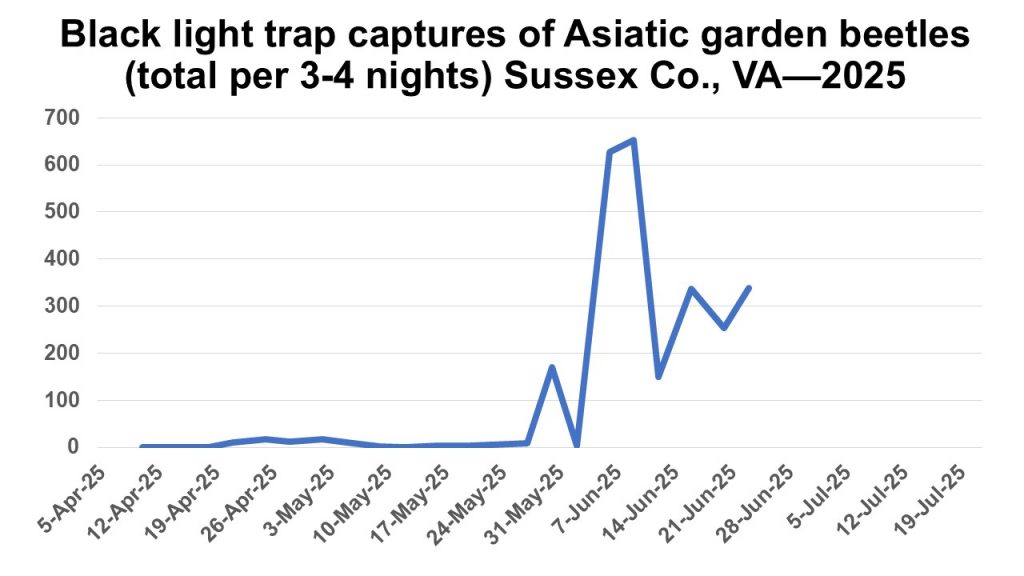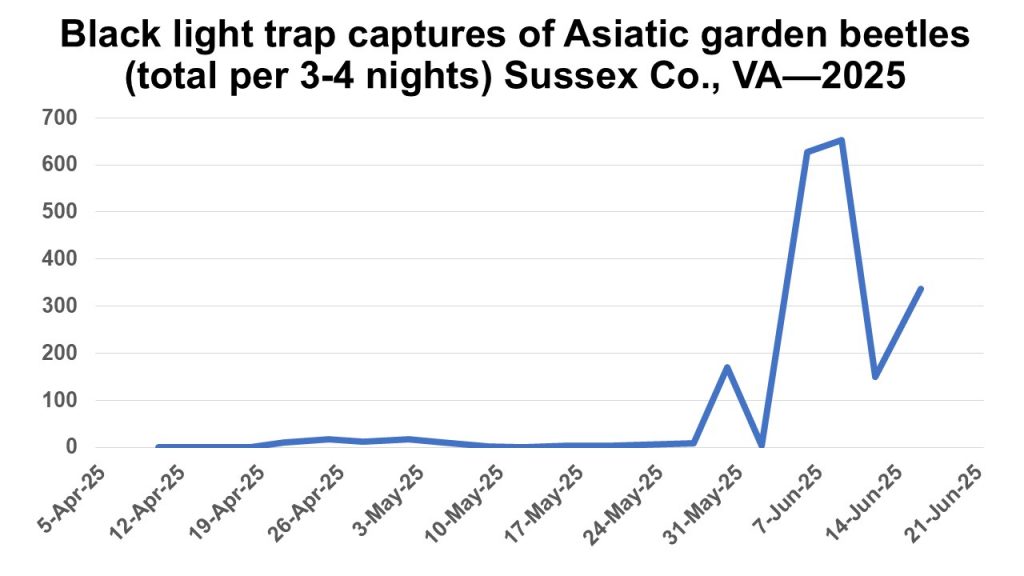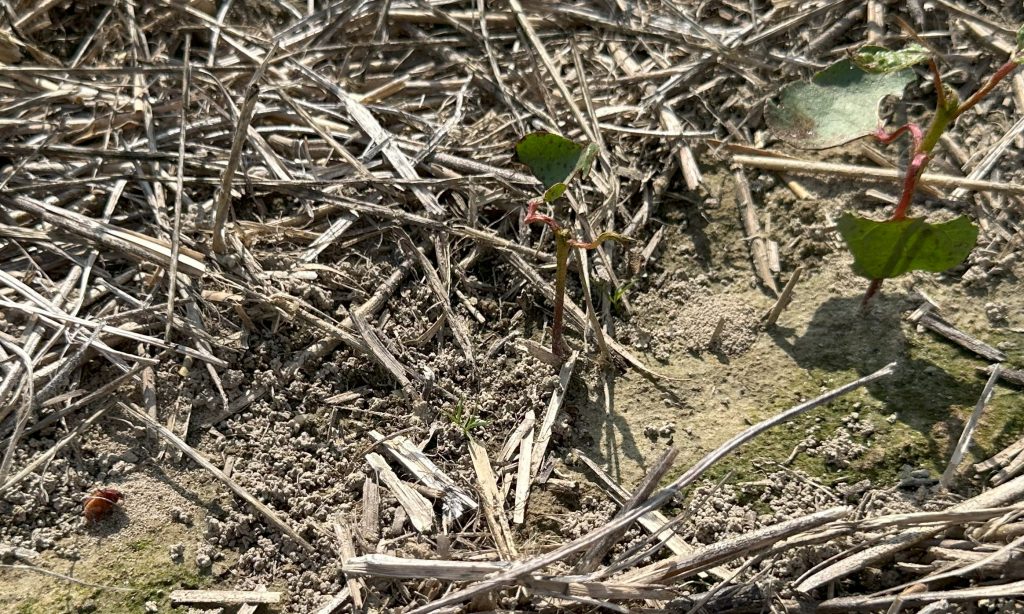Black light trap captures of Asiatic garden beetle in late June at Sussex County, VA are still high, but not as high as early June.

June corn earworm moth captures in our pheromone trap monitoring network are provided in this Table. Please note that new locations across Virginia have been added this week.
More locations across Virginia have been added to the corn earworm moth pheromone trapping network. Thanks to the many Virginia Cooperative Extension Agents and Interns (and others) who are monitoring these traps. Here is the Table (it is a pdf file; you’ll need to zoom in). Reporting Virginia counties now include: Augusta, Caroline, Dinwiddie, Essex, Greensville, Isle of Wight, King George, Lancaster, Northampton, Northumberland, Rockbridge, Rockingham, Southampton, Stafford/King George, Suffolk, Surry, Virginia Beach, and Westmoreland. Some high numbers were reported in Stafford/King George (one trap averaging 25 per night) and Virginia Beach (one trap averaging 17 per night).
The entomology program at the Tidewater AREC has continued to monitor Asiatic garden beetle adults in our black light trap. The population peak in early June 2025 (see Figure) is very similar to what we saw in early June of 2024. Much of our cotton now has enough growth on it that some defoliation can be tolerated–but similar to thrips, I would recommend keeping an eye on anything that has not reached 4-5 true leaves.

Thanks to the Virginia Soybean Board and all the participating Agents and others who have allowed us to add more pheromone traps to Virginia’s corn earworm monitoring network. Some locations reported zero’s but others such as Caroline and King George had high captures. Here is the Table along with acknowledgements.
Asiatic garden beetle (AGB) captures in our Sussex, VA black light trap spiked the first week of June, totaling 1,281 adults over a 7-day span. Some severe AGB foliar injury to seedling cotton was reported near Wakefield (image below). We dug up cotton plants and marestail in AGB hotspots, finding adults under each, but we do not have evidence that they feed on cotton roots. For more information, please see our Virginia Cooperative Extension publication, “Asiatic Garden Beetle in Cotton”

With funding support by the Virginia Soybean Board, the Tidewater AREC entomology program (led by Dr. Tim Bryant), along with collaborating Virginia Cooperative Extension Agents and Interns, has expanded our Helicoverpa zea (corn earworm/bollworm) pheromone trap monitoring network. Because corn earworm populations vary across the state, knowledge of local moth flights can better inform growers when to scout fields, use insect thresholds, and make the best management decisions for their crops. Here is the Table Numbers in the table represent variable numbers of days between trap checks (most are 3 or 4 nights).
In Dr. Tom Kuhar’s Advisory from May 28, 2025, he discusses high catches of corn earworm moths in Halifax and Northampton Counties, and in Delaware. We saw high catch numbers from Stafford and Caroline Counties this week. We’ll continue to keep you up to date on corn earworm flights across Virginia and expect many more counties to begin issuing reports.
Corn earworm (=bollworm) moth captures in local black light traps increased this week. The average number per night was 12 in Greensville County, 14 in Prince George/Disputanta, and 70 in Suffolk. Here is the Table. Scouting soybean in these locations indicated that larval numbers are low. Here is the customizable Corn Earworm Larval Threshold Calculator for Soybean. Thanks to Sara Rutherford, Scott Reiter, and the Tidewater AREC entomology crew for their reports.
Stink bugs tend to increase in soybean this time of year. This week in Greensville County we were finding a mixture of brown marmorated, green, and brown stink bugs. The threshold in soybean for grain is 5 stink bugs per 15 sweeps (all stink bug species combined) until the leaves begin to senesce and fall–at which point the threshold numbers are doubled to 10.
Insect pest pressure and beneficials will vary by field. Please be sure to scout your fields and check the Virginia Cooperative Extension thresholds.
The average number of corn earworm (=bollworm) moths captured per night was 9 in Greensville, 2 in Prince George/Disputanta, and 14 in Suffolk. Thanks to Sara Rutherford, Scott Reiter, and the Tidewater AREC entomology crew for their reports. Here is the Table.
Corn earworm (= bollworm) moth catches in southeast Virginia black light traps declined further this week. The average number captured per night was 16 in Greensville, 12 in North Dinwiddie, 2 in Prince George/Disputanta, and 6 in Suffolk. Here is the Table. Reports of soybean fields at larval threshold are coming in.